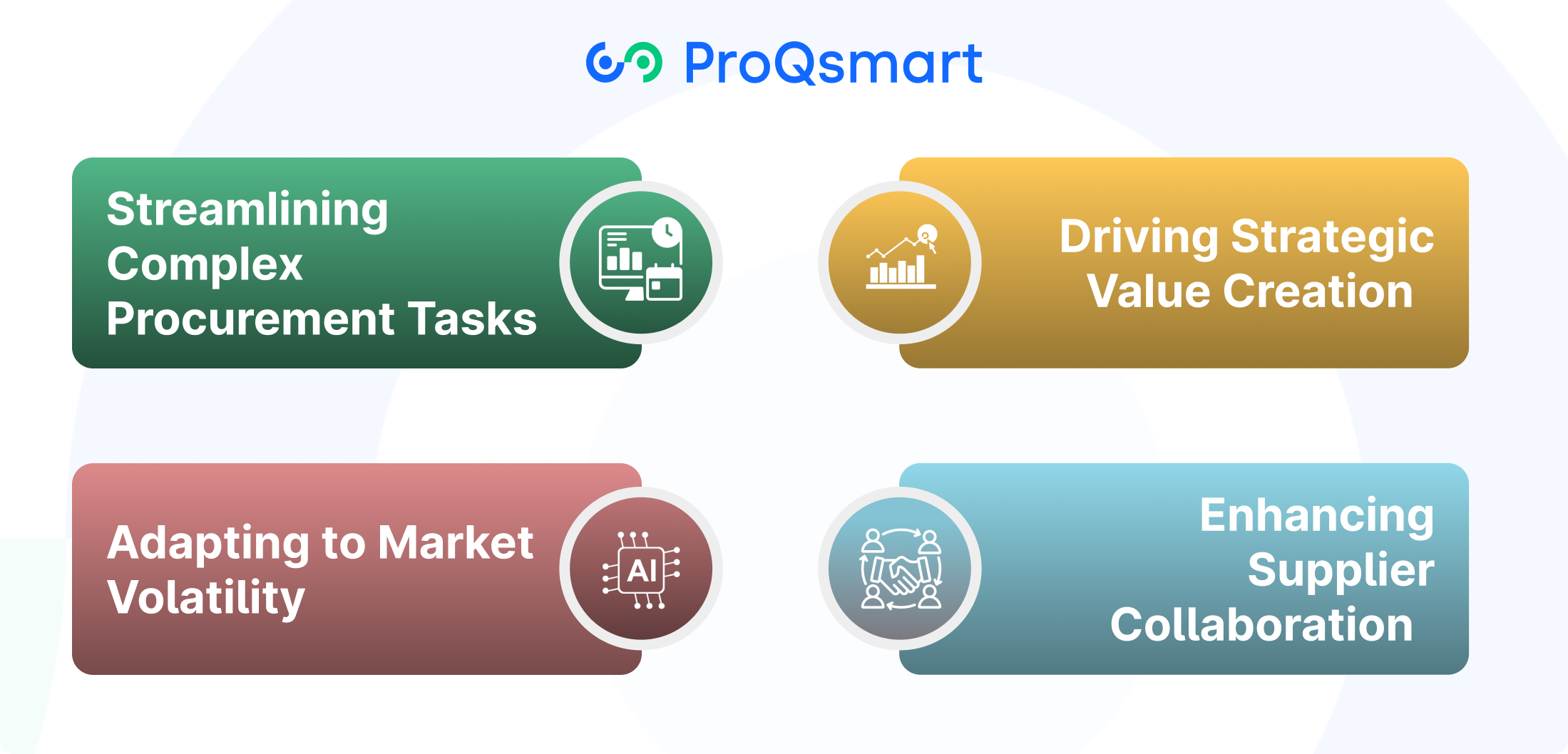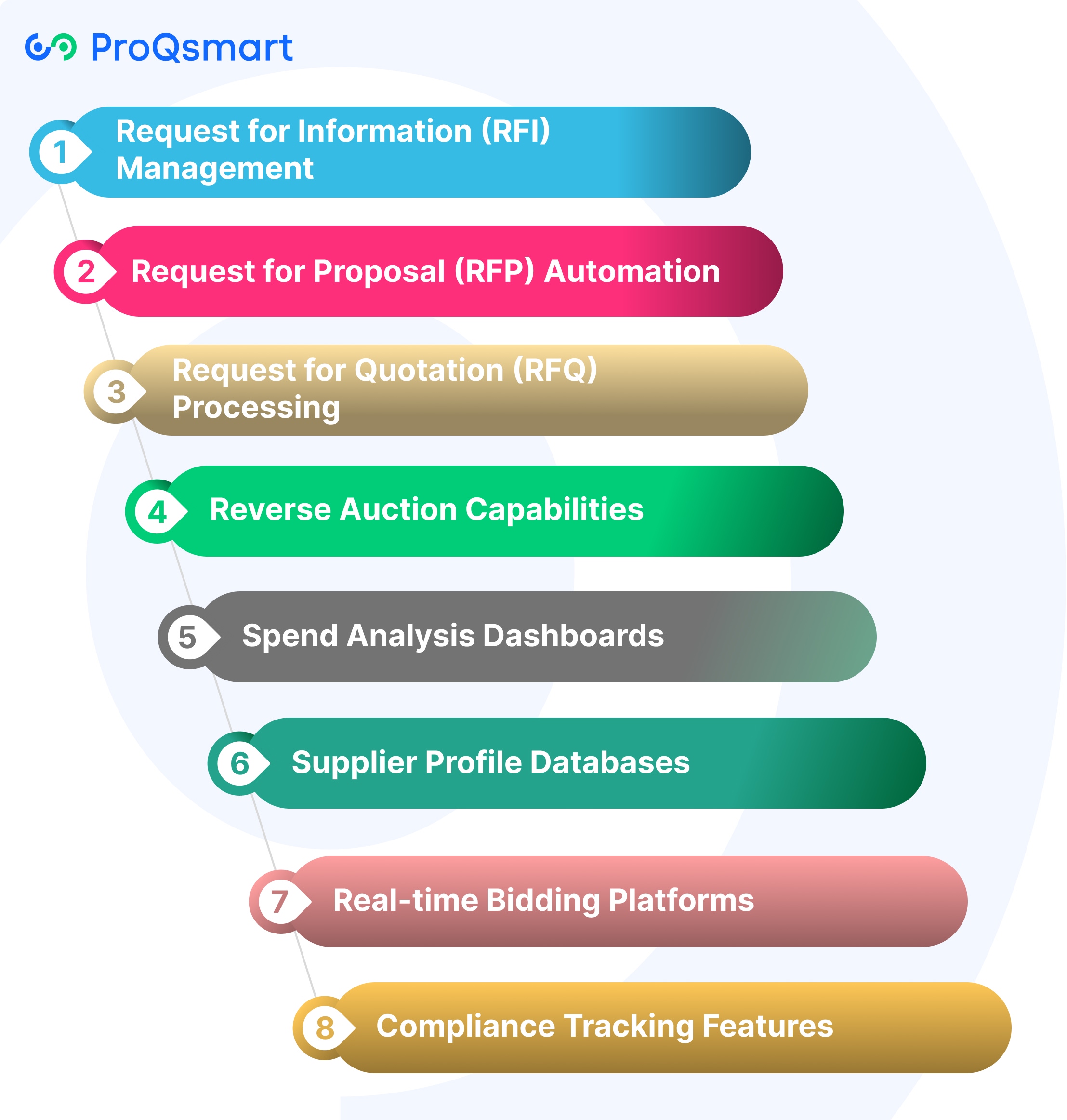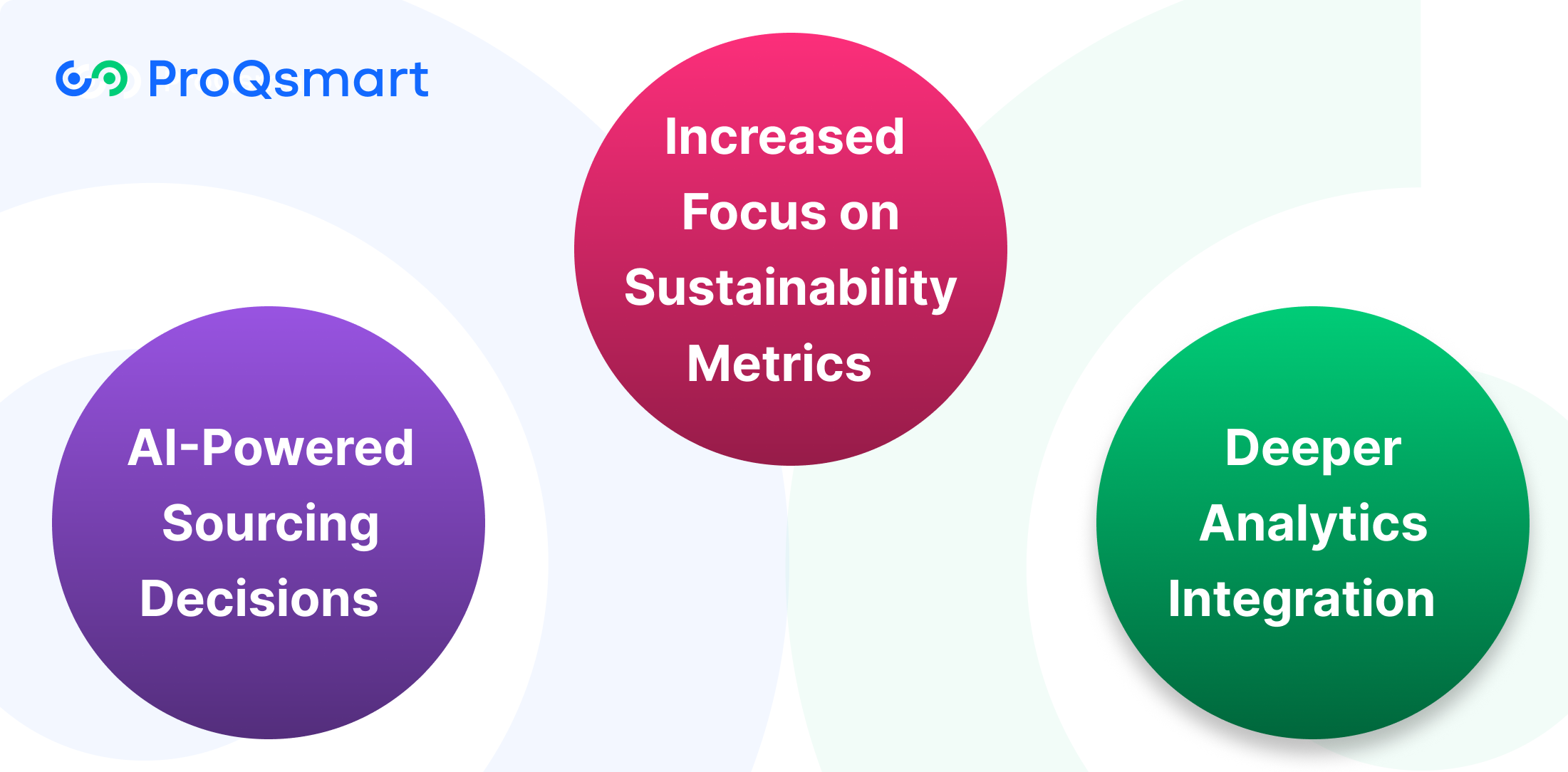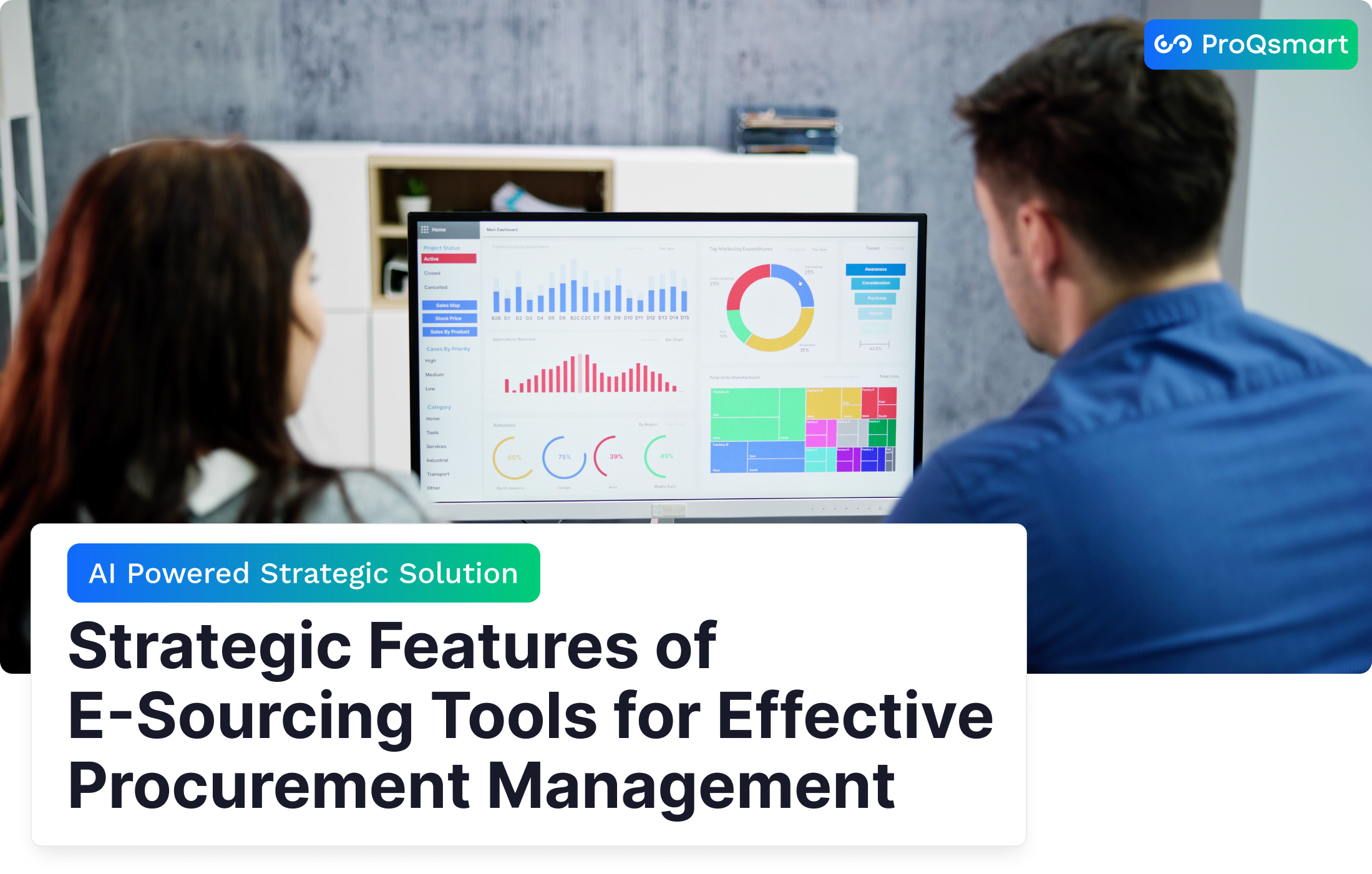eSourcing tools in procurement improve communication and collaboration between buyers and potential vendors. Companies have adopted these tools, drastically reducing the amount of paper used. They further accelerate supplier due diligence and reduce the cost of sourcing.
Additionally, many platforms allow teams to easily compare bids, track progress and share updates in real time. With eSourcing , companies receive a transparent log of each bid and process, making audits and inquiries much more efficient. These tools complement ERP systems nicely and assist in adhering to U.S. Regulations that require fair and open purchasing.
Leading makers are continually updating their solutions to meet evolving needs in supply chains. In the following sections, will focus on key features and options, as well as tips for selecting the right eSourcing tools for any procurement team.
Why E-Sourcing Matters in Procurement

With the evolution of technology, e-sourcing has become a central component to any successful procurement strategy. As our fellows learned in decidedly more agile advanced manufacturing and technology markets, buyers must have efficient mechanisms to react to quick changes in supply, cost, and demand.
When used effectively, e-sourcing tools provide teams with a distinct advantage. They assist in creating robust RFQs, analyzing quotes from hundreds of suppliers, and streamlining contract management. These systems do not just increase the efficiency of completing workflows, they reduce the overall risk and increase transparency throughout the procurement process.
E-sourcing enables deeper integration with emerging technologies like IoT and blockchain. It provides a way to track goods, verify authenticity, and foster transparency and trust across the supply chain.
Streamlining Complex Procurement Tasks
In flexible and complex procurement, that usually involves a mountain of RFP documentation, supplier vetting, and negotiation rounds. E-sourcing platforms make this much simpler by automating document collection, pre-qualifying suppliers, and managing the bidding process.
Rather than needing to call or email hundreds of suppliers, users can quickly post an RFQ. They can then solicit bids and compare their options – all in one place. Complex compliance requirements and supplier scoring that once took days are now completed in a matter of hours.
Not only does this protect against costly mistakes and save money, but it allows teams to spend more time on higher-value work.
Driving Strategic Value Creation
E-sourcing is more than a cost-cutting tool. Beyond just supporting best practices, this unites teams in making sourcing decisions that meet corporate objectives, such as sustainability or speed to market.
Strategic sourcing is simplified when you have the ability to analyze supplier performance through the lens of market dynamics in real time. Many companies have adopted e-sourcing to move away from single-source risk.
In return, they now benefit from more robust supplier bases, providing them increased leverage in negotiations and strengthening their supply chain resilience.
Adapting to Market Volatility
Markets change quickly. E-sourcing tools that leverage real-time market data and predictive analytics can equip teams to identify potential risks before they occur and make informed, accelerated decisions to mitigate disruption.
If a supplier does go down, these tools can quickly identify replacements. This flexibility ensures that production remains constant and that businesses can ride the peaks and valleys of the economy.
Enhancing Supplier Collaboration
Strong supplier relationships lead to higher quality products and reduced expenses. E-sourcing tools create direct, transparent lines of communication.
Features such as shared dashboards, HR management, and contract tracking allow both sides to remain in musical harmony. Surpassing 75 percent adoption among enterprises, e-sourcing is an example of how it has become integral to establishing more reliable, collaborative and adaptable supply chains.
Key Features of E-Sourcing Software

Today’s e-sourcing software has transformed the way procurement teams operate, allowing them to operate at lightning speed and make more data-driven decisions. Rather than wrangling spreadsheets and email threads, these tools bring it all together in one central hub.
In short, they enable teams to move faster, reduce expenditure, and respond to evolving business requirements. The right e-sourcing platform should be user-friendly and fit naturally into your other company systems and processes. It also needs to deliver actionable intelligence that leads to more intelligent, sustainable purchases.
With the right features, even the largest projects are easy to manage. More importantly, they keep you working with more suppliers and meeting hard budgets!
1. Request for Information (RFI) Management
Managing RFIs in e-sourcing software begins with RFIs built-in templates and automated workflows. Procurement teams can quickly and conveniently issue and track RFIs to their suppliers in a matter of clicks.
They can track responses as they come in. Automation enables buyers to review supplier responses in a standardized way, easily identify response gaps, and flag potential risk areas much earlier in the process.
That translates to less time wasted chasing suppliers manually and more time on ensuring you select the best supplier. Good RFI management helps businesses ensure the suppliers they choose meet all the right standards and are a good fit for each project.
To reduce the risk of duplication or miscommunication, teams should aim to ask specific, clear questions and regularly update RFI templates for each buy.
2. Request for Proposal (RFP) Automation
Automating RFPs is a giant leap forward for procurement teams looking to operate at high-speed while capturing necessary information. E-sourcing solutions generate RFPs using pre-defined templates and distribute them to chosen vendors.
They organize all proposals in one centralized repository for easy comparison and evaluation. This reduces the risk of mistakes, late submissions, and documents going missing.
Deadline reminders, scoring systems, document version tracking, and other key features keep teams organized and on task. Scoring rubrics can help focus your evaluations.
Ensure criteria are simple and run automated workflows through initial testing before rolling out to the entire workforce! By cutting down on the manual work involved, buyers spend less time on value versus paperwork.
3. Request for Quotation (RFQ) Processing
RFQ tools enable fast, competitive quoting. Now teams can upload specs, invite suppliers, and track bids all in one place.
Automation delivers reminders, identifies omissions, and even flags non-compliant bids. With all this data centralized in one system, buyers can easily compare prices, terms and more within seconds.
This in turn results in smarter purchases and less risk. For example, a procurement manager in manufacturing can easily get a view of which supplier meets their price and quality requirements.
Your teams need to ensure that RFQ specifications are unambiguous and use auto-check functions to identify outliers or mistakes ahead of final selections.
4. Reverse Auction Capabilities
Reverse auctions reverse the tables—suppliers bid against each other to provide the most competitive price for a defined requirement. E-sourcing tools simplify this, providing live bidding dashboards and auto-notifications as bids decrease.
This approach typically results in better pricing and more open contracts. Features like Dutch auctions or Cherry Picking allow teams to select the most appropriate auction style for the buy.
If you want to maximize the benefits of reverse auctions, establish definitive guidelines and communicate them as needed to your suppliers. Dashboards to monitor bids live! This strategy is most effective for commodities and straightforward services.
5. Spend Analysis Dashboards
Spend analysis is the foundation for making smart business decisions. Spend analysis dashboards provide the ability to visually display current spend activity by category, supplier or project in real-time.
Teams are able to identify trends, monitor savings, and discover new opportunities to eliminate unnecessary spending. Features such as custom filters, charts, and export options allow users to easily slice and dice the data.
For example, an individual plant manager may want to keep track of how much they are spending on each of their suppliers. They can even monitor savings achieved through a revised sourcing approach.
Your teams can leverage these impressions to inform budget negotiations, engage suppliers in strategic conversation, and prepare for future purchases.
6. Supplier Profile Databases
Supplier profile databases are a foundation for better buys. These tools centralize important information such as certificates, performance scores, and diversity status.
Buyers are able to review profiles prior to selection, view history of past performance and flag areas of concern. Features like bulk searching and tagging, as well as new document upload features, ensure that maintaining up-to-date data is easy and efficient.
Teams need to establish regular reviews and ensure suppliers are updating their information as frequently as possible. When you leverage these databases, you’re ensuring quicker onboarding, lower risk, and improved supplier diversity outcomes.
7. Real-time Bidding Platforms
Real-time bidding injects a new level of intensity to procurement. These real-time bidding platforms allow suppliers to bid in real-time, with buyers observing prices change as it happens.
Tools such as real-time feedback, live chat, and bid history monitoring keep both parties more involved. This method increases competition and usually results in greater taxpayer savings.
A tech company we work with does a great job of this. They procure components for a new product by running real-time auctions to get the lowest price!
To achieve optimal results, teams need to train suppliers on the system and establish transparent, equitable rules of engagement for the bidding process.
8. Compliance Tracking Features
Maintaining compliance is non-negotiable in today’s procurement world. For example, e-sourcing software logs each step, logs who completed each step, and alerts you to non-compliance in a snap.
These features often consist of audit trails, policy compliance, and real-time alerts if something violates corporate or government policies. This allows teams to adhere to local, state, and federal regulations, all while minimizing risk.
To maintain compliance, conduct regular audits and provide training for all users. Take advantage of integrated reporting capabilities to be proactive, not reactive!
ProQsmart: An Example of a Robust E-Sourcing Platform
ProQsmart is a great example of e-sourcing employed smartly. It leverages artificial intelligence to drive purchases, oversee auctions, and maintain supplier relationships.
The platform enables comprehensive e-tenders, collaborative work in real time, cost and progress tracking, and compliance checks. Tools including subcontractor management, bill of quantities processing, and scorecards for suppliers allow teams to operate faster and within budget.
ProQsmart’s mobile-first design gives users the flexibility to collaborate on and monitor sourcing projects anywhere. At the same time, intuitive dashboards and audit trails promote transparency and compliance throughout the process.
Benefits Beyond Simple Cost Cuts
E-sourcing tools do much more than cut costs. Beyond that, they make tangible changes to how teams approach the procurement process. They move the discussion away from purchase price to lifecycle value and optimal workflows.
For smart manufacturing crews, these tools translate to more time spent on work that makes an impact and less time spent on administrative tasks.
Boosting Process Efficiency Significantly
Teams immediately experience process improvements. E-sourcing tools eliminate redundant tasks, allowing teams to create sourcing waves that bundle like purchases.
As a result, it speeds up the entire process of issuing bids and evaluating quotes. During the first wave, most firms reduced their sourcing cycle times by at least two-thirds.
Today, later waves can operate in roughly one-fifth the time. Fewer hours spent on manual data entry equal less room for error, allowing teams to spend more time building quality and strategic thinking into their work.
Teams can leverage real-world metrics, such as cycle time per event and error rate, to demonstrate their improvements. In addition, they can show where we need to do better.
Improving Transparency and Audit Trails
E-sourcing improves transparency and audit trails. E-sourcing introduces more open and traceable records.
Every action taken, from invite to award, is recorded in an easy-to-access audit trail. Audit trails are the best way to fulfill both internal and external requirements, providing teams with evidence of a level playing field.
These actions are easy to pull with modern e-sourcing platforms that come with dashboards and time-stamped audit logs, which automatically track every action taken by teams and leaders.
When transparency is improved, trust is established between teams, vendors, and leadership.
Mitigating Supply Chain Risks
Mitigating Supply Chain Risks risk is more tangible, visible, and actionable. E-sourcing allows procurement teams to visualize complex supplier networks, understand industry trends and risks, and identify potential issues before they arise.
Tools such as risk scoring, supplier ratings, and analytics allow teams to look forward. For instance, one Midwest auto parts manufacturer employed these tools to realize that they had an over-reliance on one vendor.
They were able to immediately pivot to a stronger base. This not only reduced cut risk but addressed compliance requirements.
Strengthening Supplier Relationships
E-sourcing provides suppliers with better visibility into status updates and creates an environment that’s simply easier to collaborate in. Integrated chat, shared documents, and live notifications help ensure conversations stay collaborative and on track.
Corps teams can configure and deploy tools like surveys to solicit feedback, ensuring that suppliers have a voice. This iterative process not only strengthens relationships, it usually results in favorable terms and more innovative solutions.
Selecting Your Ideal E-Sourcing Tool
Finding the perfect e-sourcing tool determines how effectively procurement teams can control spend, mitigate supplier risk and streamline everyday workflow. The ideal solutions go beyond automation—they align with your organization’s long-term goals, help you scale as needed, and foster a positive supplier experience.
Several factors stand out when making this choice: aligning software features with real needs, checking the vendor’s track record, and making sure support is robust. Below that, let’s parse out what’s important.
Assess Your Specific Needs First
Start with a clear review of your procurement process. List the types of sourcing events you handle—direct material buying, services, subcontractor management, or complex project bids.
Pinpoint if you need spend analytics, flexible eAuctions, custom workflows, or contract management. A checklist should cover: sourcing event types, approval levels, reporting needs, compliance requirements, and integration with existing systems.
This tight focus means you pick a tool that fits, not one that forces change.
Consider Ease of Use Seriously
Clear, intuitive navigation minimizes training time and gets everyone up and running in no time. Avoid tools that are clunky and confusing, and instead look for solutions with clear dashboards, drag-and-drop functionality, and guided step-by-step processes.
For example, ProQsmart is among the leaders for easy e-tender configuration and collaborative work in real time. Mobile access, intuitive notifications, and easy document uploads are just a few of the examples of what good usability looks like.
Real adoption takes place when teams aren’t bogged down by cumbersome interfaces or back-end drop-downs.
Evaluate Vendor Support Options
Robust vendor support becomes essential to ensure a smooth roll-out and troubleshoot issues. Measure whether the provider delivers round-the-clock assistance, full onboarding training and a comprehensive knowledge base.
In short, strong support translates to quicker answers, less downtime, and ultimately, a better return on your investment. For example, ProQsmart’s vendor support is geared to onboarding, workflow advice and compliance guidance, which provides added value beyond the software.
Check Scalability for Future Growth
Check tool scalability if you plan to grow. Truly scalable platforms effortlessly address increased user demand, larger and more complex sourcing events, and new compliance requirements as they arise.
ProQsmart’s modular capabilities—such as budget conscious procurement and supplier performance monitoring—allow for growth and adaptation to shifting project scopes. Robust, scalable tools can allow your team to complete processes in as much as half the time!
They save 15-22% more in costs because they catch up with demand.
Measuring Your E-Sourcing Success
To truly drive the value of e-sourcing tools, measuring outcomes is the driving factor. Over two-thirds of companies use e-sourcing. Plus, 77% of large procurement teams rely on these systems. As a result, understanding what works and how effective it is, is essential intelligence for senior management.
E-sourcing really comes alive when you’re able to directly link its implementation to savings, time efficiencies and improved relationships with your suppliers. Regions such as North America are at the forefront of adoption. The proper checks will show that these tools speed up processes while increasing trust and control.
Tracking Cycle Time Reductions
Cycle time might be one of the most easily identifiable indicators of efficiency. Most teams simply look at the number of days from the start of sourcing until the contract is signed. E-sourcing tools automate each step—whether it’s issuing RFXs or running e-auctions—reducing manual follow-ups and time lost in email chains.
For instance, companies conducting more than 200 sourcing events annually watch cycle times nosedive, reclaiming time for more strategic pursuits. Being equipped with tools such as dashboards and auto-reminders goes a long way toward helping teams identify bottlenecks and ensure progress.
Monitoring Savings Achieved
Savings achieved are the banner headline figure. E-sourcing allows your teams to account for every dollar spent and saved. They can claim a phenomenal 12% savings in their overall spend in only a year’s time!
Sourcing teams are left to compare new contract rates to legacy spend or even worse, utilize baseline budgets. These savings fuel better decisions on future sourcing efforts and budgetary allocations. Organizations that implement e-sourcing across the board for all sourcing activities realize much greater savings. This in turn has made these tools a go-to for large producers.
Assessing User Adoption Rates
User buy-in drives the long-term success. Less workarounds High user adoption = less need for workarounds = more data to help you see the insights. Teams monitor login counts, attendance at events, testimonials from users.
Low adoption numbers can be a sign that further training is necessary or the tool needs to be adjusted. Concise guides, frequent check-ins, and celebrating quick wins increase adoption. The more it gets adopted, the more the benefits compound for the entire organization.
Evaluating Supplier Participation Levels
Supplier engagement rate — the number of suppliers that attend events, respond to RFXs, or bid at auctions. When participation is high, this indicates that suppliers trust your process and find it easy to navigate.
Procurement teams tend to focus on metrics like invite to accept rates, bid counts, and response rates. Open training for suppliers and equitable feedback loops increase participation. More robust relationships with suppliers lead to better pricing, quality, and overall value in the long run.
The Future of E-Sourcing Tools

E-sourcing tools are evolving rapidly, driven by the development of new technology and the demands of a global market. Companies are demanding more from their procurement—better data, more streamlined workflows, and more informed decision-making.
Cloud-based solutions have become the de facto standard, with fewer than five percent of new deployments from large and midsize vendors going on-premise. Nearly a third of procurement professionals expect e-sourcing tools to be used more widely in the future. This expectation stems from the long-standing trendline toward a unified global system.
While regions with mature procurement use these tools extensively, newer markets are quickly moving to close that gap. The trend is clear: companies want better, faster, and more sustainable ways to source.
AI-Powered Sourcing Decisions
AI truly is a game changer for sourcing. It analyzes massive data sets, identifies trends, and visualizes risks or opportunities in real-time. That allows buyers to have clearer and more precise insights for selecting suppliers or evaluating bids.
Solutions such as ProQsmart leverage artificial intelligence to inform sourcing decisions, align project requirements with the most suitable suppliers, and identify potential savings opportunities.
Today’s AI-driven dashboards equip sourcing teams to identify issues before they escalate, making the entire process more efficient and collaborative.
Increased Focus on Sustainability Metrics
Sustainability is a major driver today. Stakeholder pressure is leading more companies to track supplier carbon footprints, labor practices, and ethical sourcing. E-sourcing tools have started to incorporate features that track these points, allowing brands to demonstrate tangible progress.
One example is an electric vehicle startup that built specialized supplier scorecards into their platform. This innovation enhanced its brand equity and deepened trust with consumers. As an increasing number of firms connect sustainability to overall business value, these metrics should start to form a common requirement within e-sourcing.
Deeper Analytics Integration
With the rise of artificial intelligence, procurement is about to get even smarter. Integrated dashboards, spend analysis, and predictive models allow teams to detect trends, benchmark performance, and verify supplier history. This saves considerable time and reduces errors.
Companies whose firms use these tools experience improved bid cycles and improved spend control. By employing analytics to identify the bottlenecks, for instance, one global construction company was able to unencumber cash and resources, allowing them to make more competitive bids.
As more software engineers get involved in this market, costs will continue to reduce and capabilities will continue to improve.
Conclusion
E-sourcing tools significantly enhance procurement efficiency by streamlining communication and simplifying supplier evaluation. They eliminate the need for time-consuming back-and-forth exchanges by allowing teams to save forms and manage the entire bidding process digitally. With just a few clicks, buyers can vet suppliers, compare bids side by side, and select the option that best fits their needs-without digging through email archives or chasing updates. Beyond saving time, e-sourcing ensures alignment with corporate policies and creates an auditable trail of savings, increasing transparency and accountability.
Adopting the right e-sourcing platform empowers procurement teams to act swiftly and confidently in competitive markets. These tools facilitate better supplier relationships and enable organizations to uncover deeper discounts and source new suppliers more effectively. By integrating e-sourcing into your procurement strategy, you position your team to make faster decisions, reduce costs, and stay ahead of market changes.
To experience these benefits firsthand, explore how ProQsmart’s AI-driven e-sourcing platform can transform your procurement process. Schedule a demo today and see how advanced technology can help you achieve your procurement goals with greater speed and precision.
FAQs
What is an e-sourcing tool in procurement?
How does ProQsmart improve procurement efficiency?
What are the key features of ProQsmart’s e-sourcing tool?
Can ProQsmart integrate with my existing procurement system?
How does ProQsmart help reduce costs beyond bidding?
Can ProQsmart integrate with my existing procurement system?
How does ProQsmart help reduce costs beyond bidding?
You betcha. ProQsmart’s scalability and flexibility make it the perfect solution for companies of any size. Its intuitive tools streamline capex management, making capital expenditure planning a breeze and freeing up time and resources for small businesses to fuel their growth.




